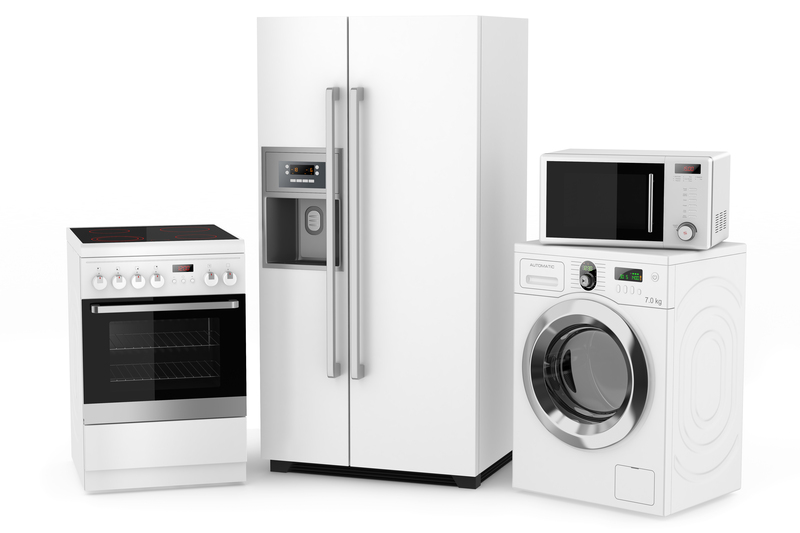Moving Pianos: Expert Hands vs. DIY
Posted on 20/06/2025
Moving Pianos: Expert Hands vs. DIY
Moving a piano is no ordinary task--it requires a unique blend of strength, precision, and care. If you're facing the challenge of relocating your beloved instrument, you might wonder if you should rely on professional piano movers or attempt a DIY move. In this comprehensive guide, we'll compare moving pianos with expert hands versus the do-it-yourself approach, outlining the pros, cons, expectations, and best practices of each. Whether you're moving an upright, baby grand, or a concert grand, this article will help you make the right choice for your prized possession.

Understanding the Challenge: Why Moving a Piano is Unique
Pianos are more than just heavy furniture. They are intricate musical instruments, notorious for their size, weight, and delicacy. Here's why moving pianos cannot be compared to moving a sofa or table:
- Weight: An upright piano can weigh 300-500 lbs, while a grand piano may exceed 1,200 lbs.
- Shape: Unbalanced weight distribution and awkward shapes make pianos challenging to maneuver through doorways and staircases.
- Fragility: A piano's internal components are delicate. One sharp bump or improper angle can inflict costly, sometimes irreparable, damage.
- Value: Many pianos hold significant monetary and sentimental value--moving them carelessly can result in loss beyond what's fixable.
Piano Moving Methods: Professionals vs. DIY
When it comes to relocating your piano, you generally have two routes: hire professional piano movers or take the DIY approach with help from friends or family. Let's delve into both options in detail:
Hiring Professional Piano Movers: What Sets the Experts Apart?
Professional piano movers bring specialized skills, equipment, and experience. Here's a breakdown of what they offer:
- Training and Experience: Movers spend years learning how to disassemble, lift, and transport pianos. They anticipate challenges and solve problems seamlessly.
- Specialized Equipment: Professionals use sturdy dollies, piano boards, skid boards, straps, and padded covers--tools designed specifically for piano relocation.
- Insurance and Accountability: When you hire professionals, you're covered if things go wrong. Reputable piano moving companies are fully insured.
- Disassembly and Assembly Skills: Grand and baby grand pianos often need to be partially taken apart for safe transport. Experts know how to do this without damaging key components.
- Efficiency: Trained movers work quickly, minimizing your piano's exposure to environmental stressors and reducing your overall moving time.
Advantages of Hiring Piano Moving Professionals
- Risk Mitigation: Protect your investment from scratches, dropped parts, or strain-related damage.
- Health and Safety: Reduce risk of personal injury such as back strain, crushed fingers, or slips.
- Peace of Mind: Rest assured knowing someone with expertise is taking care of both your piano and your property.
- Right Tools: Moving experts bring ramps, dollies, protective blankets, and workforce, ensuring smooth transport even on stairs or through narrow halls.
What to Expect When Hiring Expert Piano Movers
- Site Assessment: The moving crew will evaluate your space, access points, and anticipate any unique challenges.
- Protective Preparations: Doorways, floors, and the piano itself are protected with covers and padding.
- Disassembly (if needed): Grand pianos typically have legs and pedals disconnected for easier handling.
- Careful Loading and Transport: The piano is moved using proper lifting techniques and loaded onto a truck designed for heavy, sensitive items.
- Unloading and Setup: At the new location, the process is reversed, and movers ensure the piano is placed securely.
Cost Considerations: Professional piano moving prices may range from $150 to $600 locally, or more for complex moves and long distances. The cost is offset by reduced risk and hassle.
The DIY Piano Move: Things to Consider
Planning to move your piano yourself? Perhaps you want to save money or prefer a hands-on approach. Before you begin, it's essential to understand the realities of DIY piano moving. Here's what you'll face:
- Physical Demands: Even with several strong helpers, you'll be lifting and carrying hundreds of pounds--often through cramped spaces or up stairs.
- Lack of Equipment: Moving pianos without professional dollies, straps, or padding increases the risk of damaging both the instrument and your home.
- Technical Know-How: Disassembling and reassembling pianos can be confusing for the uninitiated, leading to possible mechanical or tuning problems.
- No Coverage for Accidents: If the piano is damaged or someone is injured, you (or your homeowners insurance) may be liable.
DIY Piano Move: Steps and Preparation
- Assemble Your Team: Recruit at least four able-bodied helpers for an upright piano, and up to six for a grand piano.
- Acquire Proper Equipment: Rent or buy heavy-duty straps, moving blankets, a piano dolly, and work gloves.
- Plan the Route: Measure all doorways, turns, and staircases. Remove obstacles ahead of time.
- Disassemble Carefully: If applicable, remove piano legs and pedals following the manufacturer's instructions or expert videos.
- Protect the Instrument: Wrap the piano in moving blankets, secure with straps, and protect the keyboard lid.
- Lift With Caution: Use your legs--not your back--and move slowly, communicating with your team at every step.
- Load and Transport: Use a truck with a sturdy liftgate. Secure the piano in place to prevent shifting during driving.
- Unwrap and Inspect: At your new destination, inspect the piano for any damage and reassemble as needed.
Common Risks and Pitfalls of Moving a Piano Yourself
- Injury: Sprained backs, broken toes, and crushed fingers are not uncommon.
- Piano Damage: Broken legs, cracked casings, bent pedals, or internal dislodgement due to improper handling.
- Property Damage: Gouged walls, scraped floors, dented doors, or damaged stairs.
- Tuning Issues: Jostling can put the piano out of tune, sometimes requiring a costly professional tuning afterward.
Cost and Value Comparison: Professional Movers vs DIY
| Factor | Professional Piano Movers | DIY Piano Move |
|---|---|---|
| Upfront Cost | Higher ($150-$600+) | Lower (may only pay for rental truck and equipment) |
| Risk | Minimal (insured and experienced) | Significant (injury, damage, liability) |
| Physical Labor | Movers handle all heavy lifting | You and helpers do all the work |
| Time | Fast and efficient | Can take several hours or more |
| Peace of Mind | High | Often stressful |
| Aftercare | Piano often arrives ready for use (may still need tuning) | Piano may need repairs or a professional tuning |
Tips for Moving a Piano Safely
When Moving with Professionals
- Research And Review: Choose piano moving specialists with positive reviews and appropriate insurance.
- Book Early: Good moving companies can book up weeks in advance, especially during peak moving seasons.
- Communicate Clearly: Tell movers about staircases, elevators, and any tight turns in advance.
If You Choose to DIY
- Don't Skimp on Equipment: Invest in or rent proper moving supplies.
- Prepare the Route: Measure all pathways and remove obstacles. Don't "wing it."
- Ask for Help: Never attempt to move a piano solo.
- Lift Safely: Use coordinated lifting techniques and avoid sudden movements.
- Protect Your Property: Lay down floor protection and pad tight corners.
- Tune After Move: Always have your piano tuned professionally after any move.
- Know When to Stop: If things get too risky, call in a professional before an accident happens.
What Type of Piano Are You Moving?
- Upright Piano: Easier to maneuver but still extremely heavy. Usually needs at least four movers.
- Baby Grand or Grand Piano: Requires partial disassembly and is best left to professionals.
- Digital Piano: Lighter and easier to transport; DIY is usually safe.
- Antique or High-Value Instruments: Absolutely call an expert--restoration cost far outweighs moving cost.

FAQs About Piano Moving
- Can All Movers Handle Pianos?
No. Always select a company that specializes in piano moving, as most general movers lack the necessary training and equipment. - Is DIY Piano Moving Cheap?
While you may save money upfront, accidents, property damage, or injuries can end up costing much more than a professional move. - What About Short Distances?
Even moving a piano within the same room can be hazardous--never underestimate the potential for injury or damage. - Should I Move My Own Piano?
Consider the risks to your health, the instrument, and your property. If in doubt, consult an expert first. - How Should I Prepare My Piano for Moving?
Secure the keyboard lid, wrap the instrument in blankets, and protect vulnerable parts. Notify your mover of any special concerns.
Conclusion: Should You Move a Piano Yourself or Hire the Experts?
Ultimately, moving pianos is a job best left to expert hands. The costs of hiring a trained piano moving service are almost always outweighed by peace of mind, safety, and protection of your valuable instrument. Choosing the DIY route should be reserved for cases where the move is exceptionally simple, the piano is not highly valuable, and you have ample help and equipment.
Key Takeaway: If you care about your piano--as a musical instrument, a sentimental object, or both--trust the experts. For everything else, proceed with the utmost caution and preparation.
Whether you engage the help of professional piano movers or attempt a DIY piano move, prioritize safety and plan carefully. Your piano deserves a smooth journey--ensure it arrives ready to fill your new space with music.







